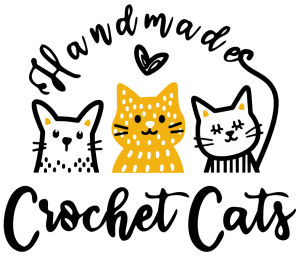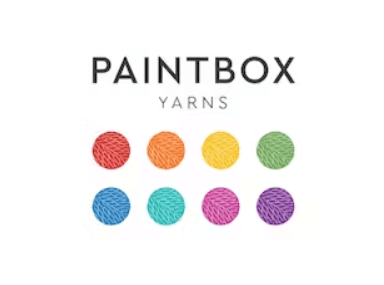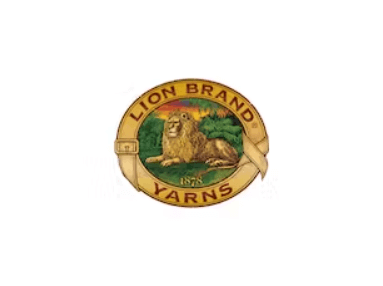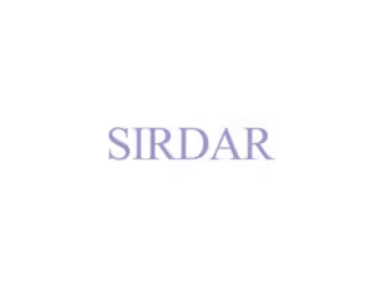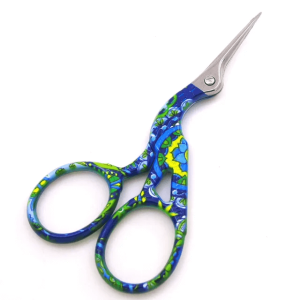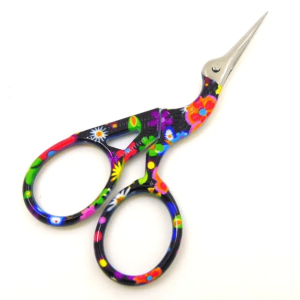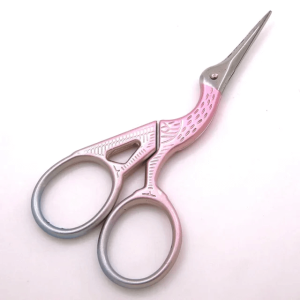Ultimate Guide to the Double Crochet Stitch (DC): Tutorials, Tips, and Project Ideas
The double crochet stitch (DC) is one of the most versatile and beginner-friendly stitches in crochet. Known for its unique height and texture, it is a favorite among crocheters for projects ranging from cozy blankets and hats to dishcloths and scarves. This guide provides an extensive overview of the double crochet stitch, including everything from a step-by-step tutorial to creative ways to incorporate DC in advanced projects.
Here’s an overview of what we’ll cover:
- What is the Double Crochet Stitch?
- Materials Needed for Double Crochet
- Step-by-Step Double Crochet Tutorial with Photos
- Tips for Mastering the Double Crochet
- Popular Projects Using Double Crochet
- Advanced Techniques and Double Crochet Variations
- Troubleshooting Common Mistakes with Double Crochet
- FAQs About the Double Crochet Stitch

What is the Double Crochet Stitch?
The double crochet (DC) stitch is one of the fundamental techniques in crochet. It allows you to create taller stitches that add both height and texture to your projects. This stitch is particularly popular for its versatility, making it suitable for a wide range of items from blankets and scarves to garments and home decor.
Benefits of the Double Crochet Stitch
Characteristics of the Double Crochet Stitch:
- Height: The DC stitch is taller than the single crochet stitch, which helps in creating airy and open fabric that is lightweight and perfect for warmer weather garments.
- Versatility: You can use double crochet in various patterns and textures, making it an essential stitch in any crocheter’s toolkit.
- Open Fabric: This stitch is excellent for creating lacy designs and is often used in projects like shawls, wraps, and summer garments.
The double crochet stitch can be worked into any row, making it easy to incorporate into existing patterns. Understanding how to execute this stitch correctly can elevate your crochet projects significantly.
Materials You’ll Need
To get started with the double crochet stitch, here are the essential materials:
- Yarn: Most yarn weights work well with Double Crochet, but medium-weight (size 4) yarn is ideal for beginners.
- Crochet Hook: Choose the hook size recommended on your yarn label.
- Scissors: Essential for trimming yarn at the end of your project.
- Tapestry Needle: For weaving in yarn ends and finishing touches.
- Stitch markers: Help you keep track of specific points within your work.
- Measuring Tape: For measuring your work to ensure it meets your desired dimensions.
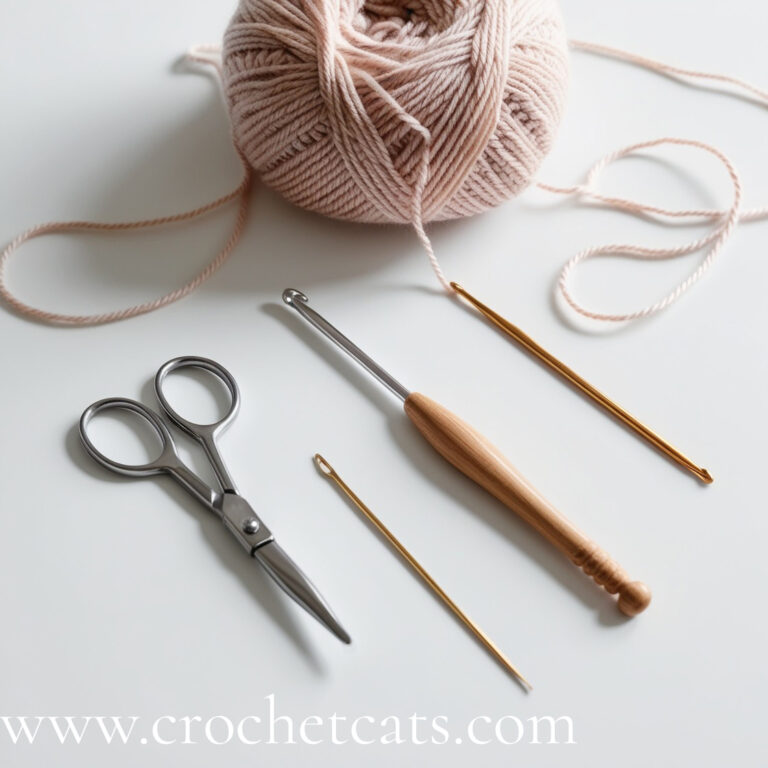
Selecting Yarn for Double Crochet
When selecting yarn for your double crochet projects, consider the following:
- Weight: For beginners, a worsted weight yarn is ideal because it is easy to handle and offers great stitch definition.
- Fiber Content: Wool, cotton, and acrylic yarns all work well. Wool provides warmth, cotton is breathable for summer garments, and acrylic is budget-friendly and versatile.
- Color and Texture: Experiment with different colors and textures. Variegated or self-striping yarns can add interesting visual effects to your projects.
Choosing the Right Hook
The size of the crochet hook affects the appearance of your double crochet stitch. A larger hook results in looser stitches, while a smaller hook creates tighter, more defined stitches. As a general guideline:
- For Worsted Weight Yarn: Use a hook size between 5.5mm (I-9) and 6.5mm (K-10.5).
It’s also beneficial to use a hook made from a material that you feel comfortable with. Options include aluminum, plastic, or bamboo, each providing a different grip and feel.
Step-by-Step Tutorial for Double Crochet Stitch
Ready to learn how to double crochet? Follow these step-by-step instructions. For clarity, the process includes simple visuals to guide you along the way.
Step 1: Yarn and Hook Preparation
Start by making a slip knot on your hook. This creates the first loop from which you’ll begin your project.
Step 2: Chain Stitch Foundation
Create a foundation chain. The number of chains will depend on your project, but it is often a multiple of stitches plus three chains to turn. For example, to make a row of double crochet stitches, you might chain 20.
Step 3: Yarn Over
After you have your chain, yarn over your hook. This action is essential for making the double crochet stitch.
Step 4: Insert the Hook
Insert your hook into the fourth chain from the hook. The first three chains you made count as the first double crochet stitch.
Step 5: Yarn Over Again
Yarn over and pull up a loop. You should now have three loops on your hook.
Step 6: Yarn Over and Pull Through
Yarn over again and pull through the first two loops on your hook. You should have two loops remaining on your hook now.
Step 7: Final Yarn Over
Yarn over once more and pull through the last two loops. Congratulations! You’ve just completed your first double crochet stitch.
Step 8: Repeat
Continue to double crochet into each chain across the row. When you reach the end, chain three to turn your work for the next row.
Step 9: Turning Your Work
When you finish your row, turn your work. Remember that the chain three at the beginning of the new row acts as your first double crochet for that row.
Step 10: Continuing Rows
Continue this process for as many rows as needed for your project. Be sure to count your stitches to keep your work even.
-
Sale!
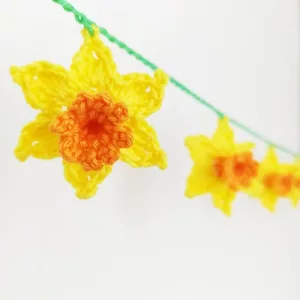
Daffodil Crochet Garland Pattern
£5.50Original price was: £5.50.£4.50Current price is: £4.50. Add to basket -
Sale!
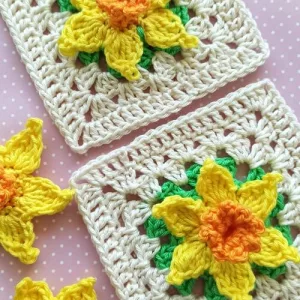
Daffodil Crochet Granny Square
£5.50Original price was: £5.50.£4.50Current price is: £4.50. Add to basket -
Sale!
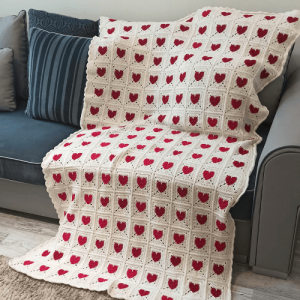
Full Of Heart Single Crochet Blanket Pattern
£5.50Original price was: £5.50.£4.50Current price is: £4.50. Add to basket -
Sale!

Heart Granny Square
£3.50Original price was: £3.50.£2.50Current price is: £2.50. Add to basket
Common Mistakes to Avoid with Double Crochet
Mastering the double crochet stitch can sometimes be challenging, especially for beginners. Here are some common mistakes that crocheters often encounter, along with tips on how to avoid them:
1. Incorrect Yarn Over Technique
Mistake: Many beginners forget to yarn over before inserting the hook into the stitch, which is crucial for double crochet.
Solution: Always remember to yarn over before you insert your hook into the stitch. This step creates the necessary loops on your hook for completing the stitch.
2. Not Counting Chains Correctly
Mistake: Skipping or miscounting the initial chain stitches can lead to uneven edges and incorrect stitch counts in subsequent rows.
Solution: Count your foundation chain carefully and double-check before starting the first row of double crochet. Using a stitch marker can help you keep track of your starting point.
3. Forgetting to Yarn Over Again
Mistake: After pulling up a loop, some crocheters forget to yarn over before pulling through the first two loops, leading to incomplete stitches.
Solution: Develop a rhythm for your double crochet technique. Visualizing each step as you go can help ensure you don’t skip this crucial yarn-over step.
4. Tension Issues
Mistake: Some crocheters have tension that is too tight or too loose, resulting in uneven stitches or a project that doesn’t drape well.
Solution: Practice maintaining a consistent tension throughout your work. If your stitches are too tight, try using a larger hook or relaxing your grip. If they are too loose, use a smaller hook or increase your tension.
5. Inconsistent Stitch Height
Mistake: If your double crochet stitches vary in height, it can make your work look messy and unprofessional.
Solution: Focus on making your yarn overs consistent and ensure you pull up the same height each time. Regular practice will help you develop muscle memory for the proper height.
6. Losing Track of Rows
Mistake: It’s easy to lose count of your rows, especially in larger projects. This can result in uneven edges or an unexpected number of stitches.
Solution: Use a row counter or keep a tally on paper to track the number of rows you’ve completed. Some crocheters prefer to use a stitch marker at the end of each row for a visual reminder.
7. Crocheting into the Wrong Stitch
Mistake: Beginners often crochet into the wrong stitch, leading to missed stitches and uneven rows.
Solution: Always identify the stitch you are working into. Look for the top of the stitch or the “V” shape created by the previous row. This will help you maintain the correct stitch count and avoid gaps.
8. Twisted Chains
Mistake: A twisted foundation chain can lead to an uneven starting point, affecting the overall shape of your project.
Solution: Before joining your chain into a ring or starting your first row, check to ensure your chain is not twisted. If it is, untwist it before proceeding.
9. Not Using the Right Hook Size
Mistake: Using a hook that is too large or too small for your yarn can result in stitches that are either too loose or too tight.
Solution: Always check the recommended hook size for your chosen yarn weight on the yarn label. If you’re unsure, experiment with different hook sizes to see which produces the best results.
10. Ignoring Gauge
Mistake: Not checking gauge can lead to projects that are the wrong size, especially in garments.
Solution: Before starting a new project, make a gauge swatch using the stitch you’ll be using in your project. Measure your swatch and compare it to the pattern’s requirements.
11. Not Weaving in Ends Properly
Mistake: Failing to weave in yarn ends can result in unraveling and a messy finished project.
Solution: Use a tapestry needle to weave in ends securely at the end of your project. Make sure to weave through several stitches to anchor the ends effectively.
12. Getting Frustrated
Mistake: Many crocheters get frustrated when things don’t go as planned, leading to mistakes and even abandoning the project.
Solution: Take breaks when you feel overwhelmed. Crochet should be enjoyable! If you’re struggling, consider revisiting the basics or watching a tutorial for guidance.
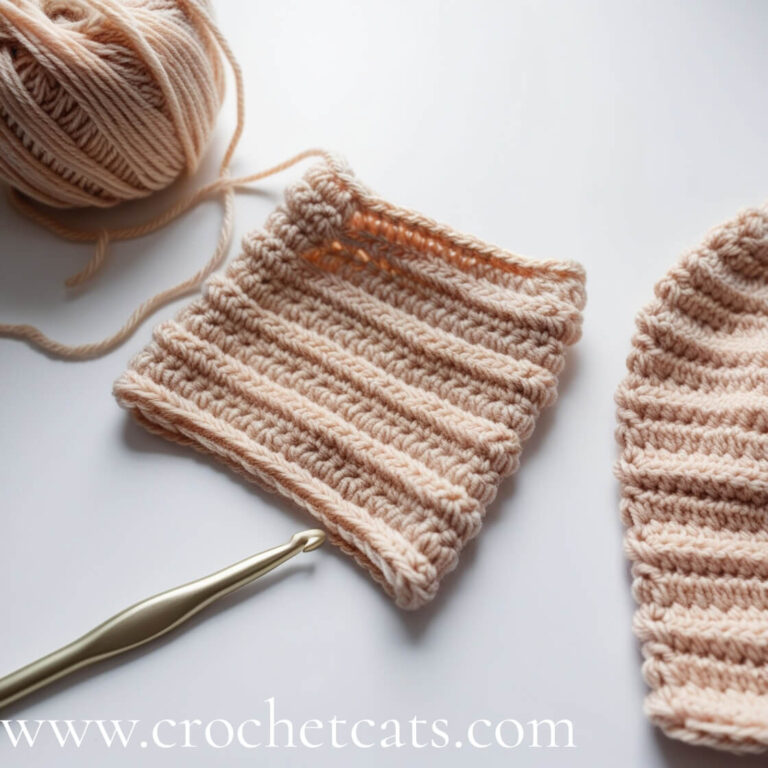
Top Tips for Perfecting Your Double Crochet
Mastering double crochet takes practice and patience. Here are some expert tips to help you enhance your skills:
Practice Makes Perfect: The more you practice the double crochet stitch, the more comfortable you will become. Consider making swatches to hone your technique.
Keep Tension Consistent: Maintaining consistent yarn tension is crucial for creating evenly spaced stitches. If your stitches are too tight, try using a larger hook.
Use a Stitch Marker: If you’re working on a large project, using a stitch marker can help you keep track of the beginning of your rows. This is especially helpful for intricate patterns.
Watch Your Rows: Always count your stitches as you work. This will help you catch any mistakes early and avoid having to frog (undo) large portions of your work.
Refer to Video Tutorials: Sometimes, seeing the technique demonstrated can clarify any confusion. Look for video tutorials that show the double crochet stitch in action.
Experiment with Tension: Don’t be afraid to adjust your grip and the way you hold the yarn. Finding a comfortable position can help you maintain better tension.
Try Different Yarns: Different yarns behave differently, and experimenting with various weights and fibers can help you find what you like best.
Project Ideas Using Double Crochet Stitch
The double crochet stitch is not only functional but also a great way to add beauty to your projects. Here are some popular items where you can effectively use the double crochet stitch:
1. Blankets
Double crochet is perfect for creating cozy blankets, as the taller stitches help your project grow quickly. You can create simple rows of double crochet or combine them with other stitches for texture. Consider using a variety of colors to create stripes or blocks.
2. Scarves and Shawls
The airy nature of double crochet makes it an excellent choice for lightweight scarves and shawls. You can create delicate patterns by alternating rows of double crochet with other stitches, or try working in a lace pattern for added flair.
3. Garments
Sweaters, cardigans, and tops can all benefit from the double crochet stitch. The height of the stitch helps garments drape beautifully and provides the necessary stretch. Experiment with different yarn weights to create various styles, from summer tops to cozy winter sweaters.
4. Home Decor
Double crochet is fantastic for home decor projects, including cushion covers, table runners, and wall hangings. You can create unique textures and patterns that enhance your living space.
5. Accessories
Hats, bags, and other accessories can be made using double crochet. This stitch provides a sturdy yet flexible fabric, making it ideal for items that require a bit of structure while still being lightweight.

Advanced Double Crochet Techniques and Variations
Once you’ve mastered the basic double crochet stitch, consider exploring these advanced techniques and variations to add interest and complexity to your projects:
1. Double Crochet Cluster
This technique involves working multiple double crochet stitches into one stitch. This creates a fuller, more textured look that is great for adding depth to your work.
How to Create a Cluster:
- Yarn over, insert your hook into the desired stitch, yarn over again, and pull up a loop.
- Yarn over and pull through the first two loops on your hook, but do not complete the stitch.
- Repeat this process for the desired number of stitches (usually 3-5).
- Yarn over and pull through all remaining loops on your hook.
2. V-Stitch
The V-stitch creates a beautiful pattern by alternating double crochet stitches. It gives a unique and decorative look, making it popular for shawls and blankets.
How to Create a V-Stitch:
- Yarn over, insert your hook into the stitch, yarn over, and pull up a loop.
- Yarn over and pull through the first two loops, then yarn over and pull through the last two loops (this is your first double crochet).
- Skip the next stitch and repeat the process to create another double crochet into the next stitch.
3. Shell Stitch
This technique combines multiple double crochet stitches into one to form a shell shape. It’s excellent for borders and decorative patterns.
How to Create a Shell:
- Yarn over, insert your hook into the desired stitch, yarn over, and pull up a loop.
- Yarn over and pull through the first two loops, then yarn over and pull through the last two loops (this is your first double crochet).
- Repeat this process (usually 5 times) in the same stitch to form a shell.
4. Crossed Double Crochet
Crossed double crochet stitches create an intricate design by crossing over double crochet stitches. This adds visual interest and is perfect for advanced projects.
How to Create Crossed Double Crochet:
- Yarn over, skip the first stitch, and double crochet into the second stitch.
- Yarn over, return to the first stitch, and double crochet.
- Continue this process across your row.
5. Back Post Double Crochet
This variation creates texture by working around the post of the double crochet stitch from the previous row, giving a raised effect.
How to Create Back Post Double Crochet:
- Yarn over, insert your hook from back to front around the post of the double crochet stitch below.
- Yarn over and pull up a loop, yarn over and pull through the first two loops, then yarn over and pull through the last two loops.
6. Double Crochet in the Round
For those looking to work in the round, double crochet stitches can easily be adapted. This technique is popular for hats and bags, where you want a seamless fabric.
How to Work in the Round:
- Start with a magic circle or chain to form the base.
- Work double crochet stitches into the circle or chain as desired, joining at the end of each round.
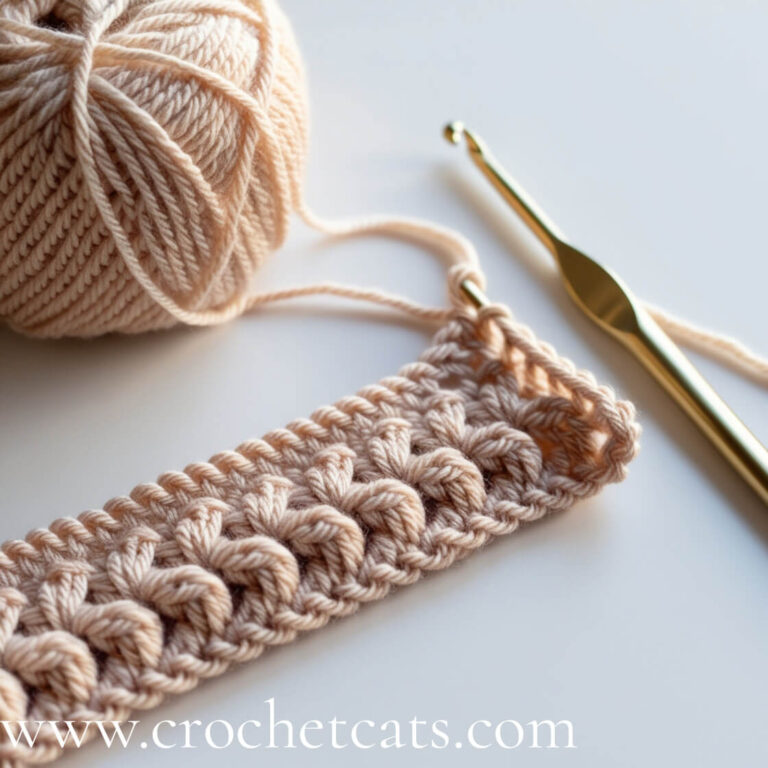
Troubleshooting Double Crochet
Even experienced crocheters can make mistakes. Here are some common issues and how to fix them:
1. Uneven Stitch Height
If your double crochet stitches vary in height, ensure that you are yarning over consistently and pulling through loops smoothly. Practicing your tension will help.
2. Skipped Stitches
Always count your stitches as you go. If you notice a gap or an extra stitch, it’s often due to skipped stitches. To fix this, pull back to the last completed stitch and continue from there.
3. Twisted Chains
If your foundation chain is twisted, your work will not lay flat. Always check that your chain is not twisted before beginning your first row.
4. Too Tight or Loose Stitches
If your stitches are too tight, consider using a larger hook or adjusting your grip. Conversely, if your stitches are too loose, you may need to use a smaller hook or apply more tension as you work.
5. Uneven Edges
If your project has uneven edges, check your counting. Make sure to add the appropriate number of stitches at the beginning and end of each row. Use a stitch marker to help keep track of your first stitch.
6. Wrong Stitch Count
If you consistently end up with the wrong number of stitches, count your stitches after every row. Keep a tally to ensure you’re staying on track.
7. Fraying Yarn
If your yarn is fraying, consider changing to a different type of yarn. Some fibers are more prone to fraying than others, especially when worked with certain stitches.
FAQs About the Double Crochet Stitch
1. What is the difference between single and double crochet?
Single crochet creates a denser fabric, while double crochet is taller and more open, making it suitable for different project types. Double crochet is generally faster to work up than single crochet.
2. How do I know which yarn to use?
Choose yarn based on the project requirements. For beginners, medium weight yarn (Worsted weight #4) is recommended for ease of handling and stitch definition. Always check the yarn label for guidance.
3. Can I use double crochet in circular projects?
Yes! Double crochet can be used in circular crochet patterns. Adjust your stitch count accordingly to maintain the desired width.
4. What if I make a mistake while crocheting?
If you make a mistake, you can always undo your stitches (also known as “frogging”) and start over or fix the mistake as you go. Many crocheters keep a small pair of scissors handy for this purpose.
5. How do I incorporate double crochet into existing patterns?
Look for places in the pattern where height is needed, and replace single crochet stitches with double crochet stitches for added texture and dimension.
6. How many double crochet stitches are in a row?
The number of double crochet stitches per row will depend on your project. For most patterns, the number will be indicated. If you are creating a foundation chain, it is often a multiple of the number of stitches plus a few for turning.
7. Can I change yarn types mid-project?
Yes, you can change yarn types mid-project, but keep in mind that different fibers will behave differently. Always make sure to adjust your tension and hook size accordingly.
Mastering the double crochet stitch opens up a world of possibilities for your crochet projects. Whether you’re creating cozy blankets or stylish garments, this versatile stitch can elevate your work. Remember to practice consistently, use the tips provided, and don’t hesitate to experiment with advanced techniques as you grow in your crochet journey. Happy crocheting!
Crochet Patterns
-
Sale!

Daffodil Crochet Garland Pattern
£5.50Original price was: £5.50.£4.50Current price is: £4.50. Add to basket -
Sale!

Daffodil Crochet Granny Square
£5.50Original price was: £5.50.£4.50Current price is: £4.50. Add to basket -
Sale!

Full Of Heart Single Crochet Blanket Pattern
£5.50Original price was: £5.50.£4.50Current price is: £4.50. Add to basket -
Sale!

Heart Granny Square
£3.50Original price was: £3.50.£2.50Current price is: £2.50. Add to basket
Accessories
-
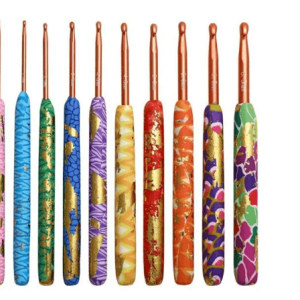
10 x Golden Touch Crochet Hook Set, 2-6.5mm
£19.00 Add to basket -
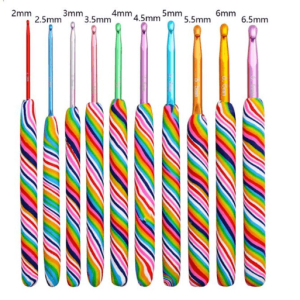
10 x Rainbow Bliss Crochet Hook Set, 2-6.5mm
£19.00 Add to basket -
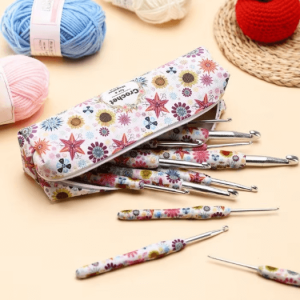
14 x ColorSplash Crochet Hook Set With Case, 2.25-10mm
£24.00 Add to basket -
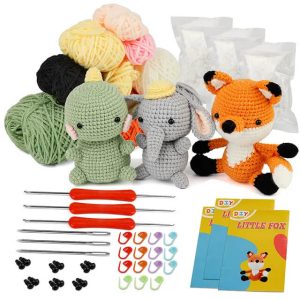
3x Amigurumi Crochet Kit – Fox, Elephant, Dinosaur
£15.00 Add to basket -
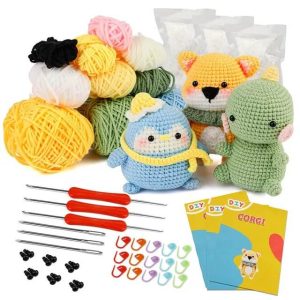
3x Amigurumi Crochet Kit – Penguin, Teddy, Dinosaur
£15.00 Add to basket -

5 x BlossomCraft Floral Crochet Hook Set, 6.5mm-7mm-8mm-9mm-10mm
£14.00 Add to basket -
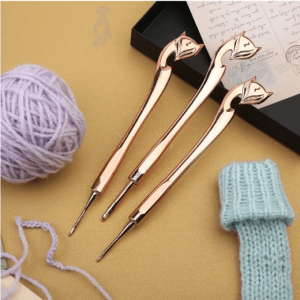
8 x Fox Lightweight Crochet Hook Set, 2.5-6mm
£18.00 Select options This product has multiple variants. The options may be chosen on the product page -
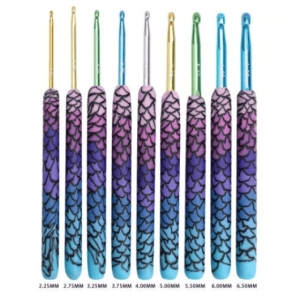
9 x Beautiful Mermaid Crochet Hook Set, 2.25-6.5mm
£18.00 Add to basket
